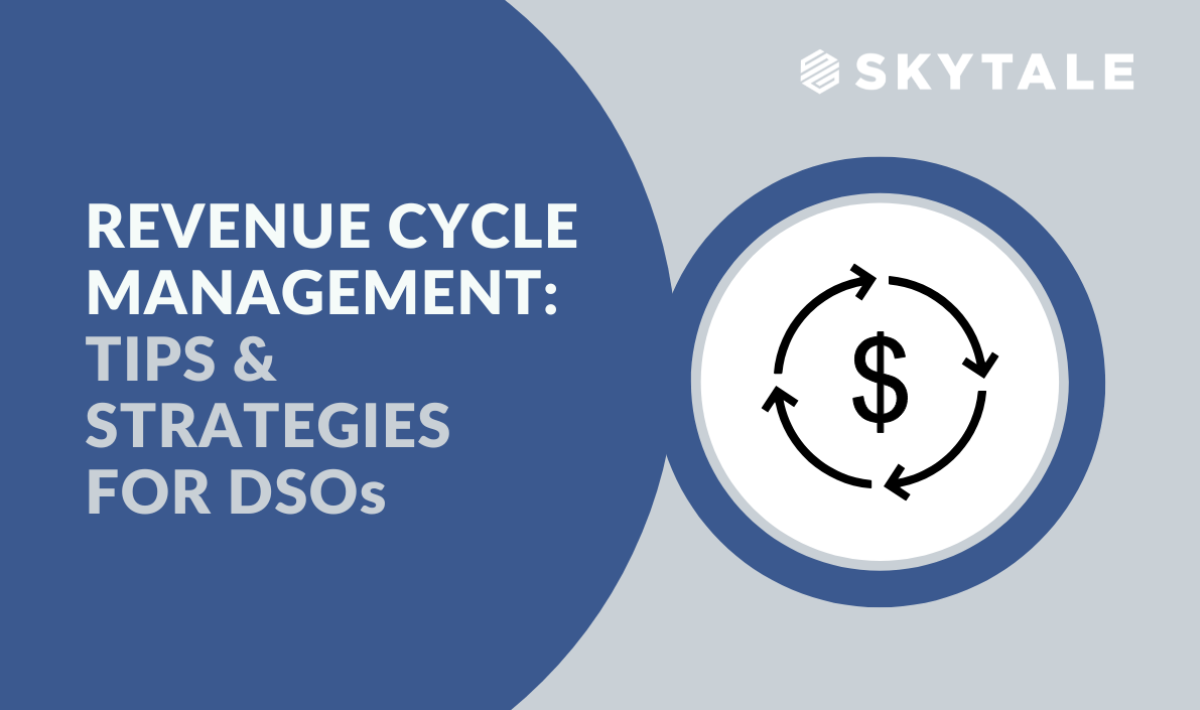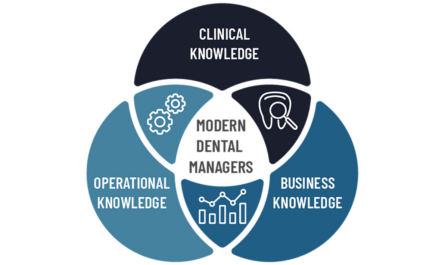Sponsored Content: Skytale Group
By Greg Mahoney, Senior Manager, Skytale Group
As your DSO grows, so does the complexity of your business. Keeping tabs on patient appointments, insurance providers, and payment types gets more and more complicated the more patients you treat. That’s where revenue cycle management comes in.
What is revenue cycle management?
Revenue cycle management (RCM) is how healthcare organizations collect revenue. It starts with the patient’s first appointment and ends when insurance claims and patient payments are complete. In other words, RCM links the provider with patient benefits and payor reimbursements.
Steps of RCM:
- Contracting and credentialing: Establish or renegotiate the contract for procedure reimbursements. “Credentialing” is applying and registering a doctor to the reimbursement contract.
- Patient benefits verification: Use the patient’s information to research what benefits they actually have as part of their insurance plan. It’s important to do this before the appointment so you can provide an accurate treatment plan—and financial estimates. This increases case acceptance from patients and provides clarity to the office how they can bill the payor while minimizing patient frustrations.
- Claims processing: Submit a claim to the patient’s insurance company using the correct service codes.
- Reimbursement and cash posting: Receive reimbursement from the insurance company and collect any outstanding payment from the patient for services provided.
- Claims follow-up: Follow up on outstanding claims (or patient balances) that are unpaid. (If not conducted properly, this can lead to serious cash flow issues, especially when the business is dependent on a few main insurance payors for all revenue.)
Each step helps work toward receiving the highest possible reimbursement amount. The RCM process also helps ensure that accounts receivable is managed appropriately.
How does RCM impact a DSO’s bottom line?
When implemented well, this RCM process can help your practice keep tabs on every appointment, every service, and every outstanding claim to make sure everything makes its way to accounts receivable. The success of RCM can be measured in the total number and value of outstanding insurance claims and patient balances. A great RCM improves cash flow and accounts receivable!
Falling behind in the process, or skipping a step, can lead to increasing unpaid claims—and ultimately, a cash flow issue for the DSO. If providers are paid on collections, they might be unhappy without commensurate compensation. This can lead to turnover and write-offs.
5 tips for improving RCM in your practice
- Update UCR (usual, customary, and reasonable) rates and payor fee schedules annually. Confirm contracting and credentialing for each provider.
- Assure claims are verified and batched daily.
- Understand that each payor has a typical timeframe of remitting payment. Chart this for each payor and use it to follow up on claims that take longer than expected.
- Begin with the claims that may time out of payor consideration by largest dollar amount.
- When tackling an outstanding claims issue, measure the issue in terms of accounts receivable as well as number of claims in each bucket. Solve accounts receivable issues by addressing each claim. Set realistic goals for how many can be addressed daily, weekly, or by person.
- Consider outsourcing some of the RCM grunt work.
Many DSOs struggle to find effective solutions for RCM. Once you’ve used the tips above to troubleshoot the process, we recommend:
- Consistent assessment and reviews of the process
- Developing consistent RCM systems and documenting the process
- Training employees
- Measuring your progress
- Celebrating success!
Revenue cycle management can be challenging, but implementing it well can add value to your DSO. If you’re hoping to grow, scale, or optimize your financial performance, RCM can help you meet your goals.
Greg Mahoney is a Senior Manager at Skytale Group. He joins the Skytale team with broad experience in building infrastructure and strategic planning in the dental industry. Utilizing experience from individual locations, emerging groups, and a DSO with more than 100 locations, Greg expertly builds strategies and helps executive teams reach their goals.
Greg maximizes individual location production. He previously helped a practice grow production from $1 million to $7.5 million annually. As a former COO and management support strategist, he has been successful in crafting the management structure and systems to grow large organizations. He joins the Skytale team with expertise in change management, finance, marketing, and IT systems.
By nurturing revenue-generating activities and their related systems, Greg assists clients in reaching their business and personal goals. His ability to step back and assess problems from multiple perspectives gives business owners the peace of mind that advice is well-conceived, with a genesis in real-world experience.
Greg likes hiking, fishing, and other outdoor activities. You can find him on the weekends on the lake or in the backyard with his three kids.
Greg received his B.A. at Wabash College and MBA from Mendoza College of Business at the University of Notre Dame.






